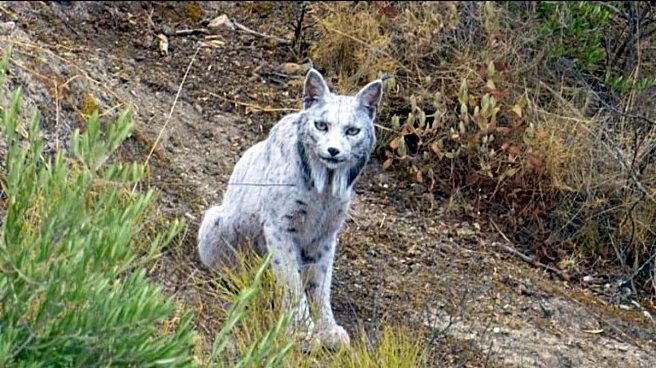A photographer in Spain has located what is believed to be the world’s first-ever white Iberian lynx, which is extremely rare even among the world’s rarest cats. The leucistic animal is practically a myth,
as most of the species are usually brown or beige-white.
The lynx spotted in Spain is leucistic, a condition that causes a lack of pigmentation in the fur, but not in the eyes, causing the ghostly appearance of the wildcat. Lynxes are already classified among the world’s critically endangered species, and a leucistic one is extremely rare.
A photographer in Spain has documented the nation’s first white Iberian lynx, a rare stunning leucistic specimen. pic.twitter.com/J2OupqKeMk
— Open Source Intel (@Osint613) October 29, 2025
According to the World Wildlife Fund (WWF), the Iberian lynx is heavily spotted and weighs about half as much as the Eurasian species, with long legs and a very short tail with a black tip. Its coat is tawny with dark spots and it bears a characteristic “beard” around its face and prominent black ear tufts.
The miracle discovery is being credited to widespread conservation efforts to protect the Iberian lynx, which was saved from extinction after dropping to below 100 big cats in 2002. However, conservationists have warned that while the white fur looks great on camera, it is a terrible camouflage in the wild.
The internet was amazed by the sighting and marvelled at the majestic lynx. “What an incredible find! This white lynx is a powerful symbol of how resilient nature can be when we work to protect it,” a user said.
“What a beautiful creature,” an individual wrote on Reddit. “What a stunning testament to conservation done right – Spain’s Iberian lynx clawing back from the brink of oblivion, and now gifting us this ghostly leucistic marvel prowling the Andalusian wilds,” another netizen commented.
“That looks like it could, at any random moment, sprout wings and conquer continents,” a fourth person wrote.
The Iberian lynx started declining steadily during the 20th century after being hunted by poachers, and by 2002, only two isolated breeding populations remained in the world, totaling about 100 adult animals with 25 breeding females.
However, extensive joint efforts of the Spanish national and regional administrations, different NGOs and the European Union-funded Life Projects managed to bring back the species from the brink of extinction. The 2015 census showed 404 adult lynxes in the world, and the population reached about 2,000 by 2025.
However, the progress is at risk after several regional governments in Spain acceded to pressure from farmers and hunters to block the reintroduction of the species into the wild. Opponents of the lynx conservation programme alleged wildcat preys on livestock, as well as rabbits and partridges, The Guardian reported.


/images/ppid_59c68470-image-176174763148755450.webp)












